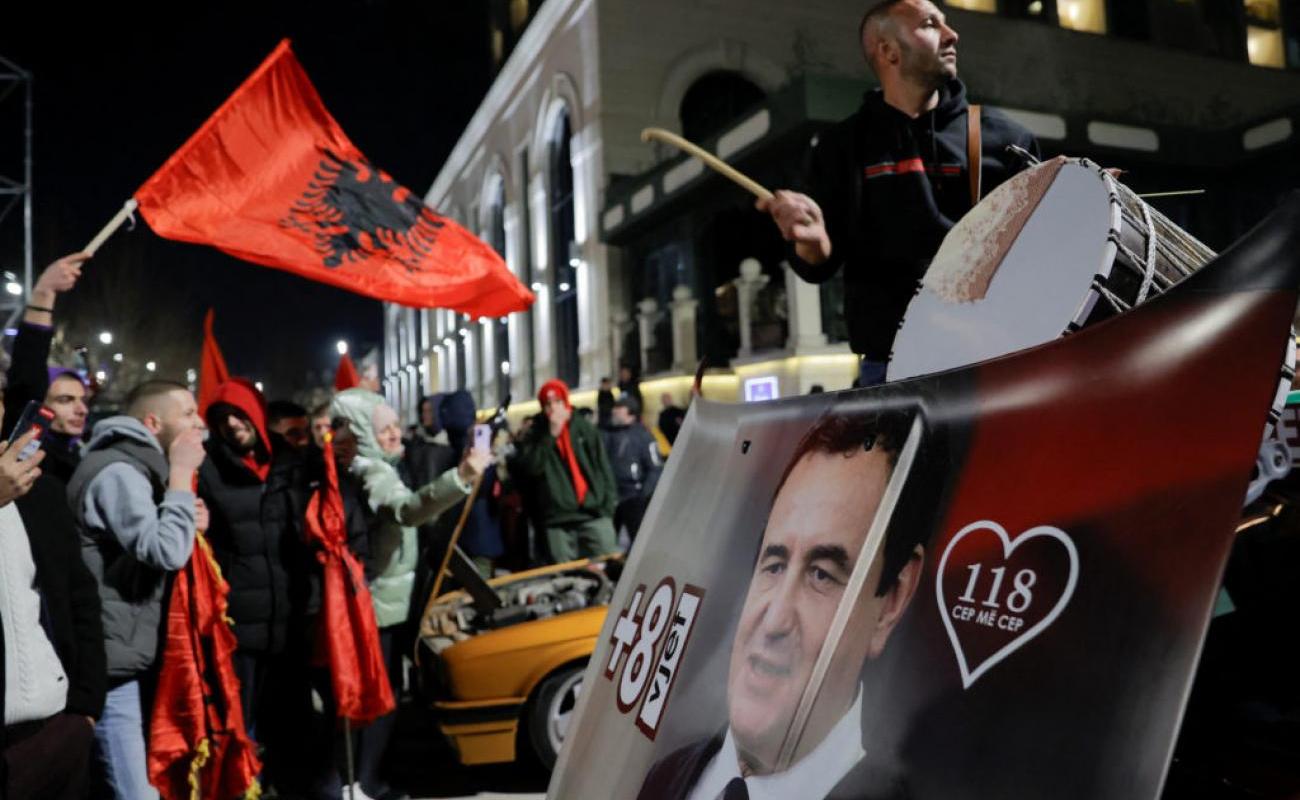Antagonists and protagonists: how Serbia and Russia framed the local elections in Kosovo

During the local elections of October 12, 2025, the Serbian political entity, the Serbian List, won 9 out of 10 municipalities with a Serb majority. But the way Serbia and Russia framed this electoral process, as well as the Serbian List’s victory, went beyond the local dimension. Instead of being treated as a municipal election, they were presented as a battle for national survival, a struggle between the protagonists “protecting” the Serbian people and the antagonists “oppressing” Albanians. Through a coordinated media campaign, Belgrade and Moscow created a narrative that gave the event the dimensions of a symbolic referendum on Serbia’s legitimacy in Kosovo.
In this media and political scenario, the Serbian List (LS) was positioned as the sole defensive force and the absolute protagonist. The main goal of the LS campaign was to “restore Serbian control” over Serb-majority municipalities, while the vote for this subject was interpreted as an “act of national resistance to repression” and as a “vote for the future, for the preservation of the Serbian community”. The leader of the LS, Zlatan Elek, described the process as a “battle for the survival of the Serbian people in Kosovo”, directly linking it to Belgrade politics and the role of Aleksandar Vučić as a defensive figure.
In this narrative, Belgrade was placed at the center as the sole guarantor of the existence of the Serbian community in Kosovo. To legitimize this position, Serbian leaders appeared as the sole guarantors of this political and national mission. President Aleksandar Vučić described the Serbian List as “the only one that protects the interests of the Serbian people,” transforming the election campaign into a project of identity survival. He directly linked voting participation to “the future of Serbs in Kosovo,” while promises of opening hundreds of new jobs and financial assistance to Serbian municipalities were used as electoral mobilization tools. Petar Petković, the director of the Office for Kosovo, went further, describing the process as a “nationwide issue” and calling for unity “under a single Serbian flag,” emphasizing that Belgrade “is not interfering in local elections, because Kosovo is Serbia.”
On the other side of this dramatic framework, Albin Kurti and the Kosovo institutions were consistently portrayed as the main antagonists. They were accused of being the source of “terror,” “discrimination,” “repression,” and “deliberate provocations” against Serbs. The victimization narrative was the main pillar of this discourse: Serbian and Russian media claimed that the elections were being held under “institutional pressure” and “censorship by official Pristina.” The accusations included the obstruction of Serbian media accreditation, the banning of election spots, the removal of Cyrillic inscriptions, and the “risk of ethnic change” through new Albanian voter registrations. Petkovic portrayed Kurti as the initiator of a “no Serbs, no problems” policy, presenting the process as an attempt to gradually expel Serbs from the north.
In this atmosphere, the framework of “institutional apartheid” became one of the most powerful metaphors of Serbian propaganda. Politicians and analysts accused Kurti of “ruling by 3% over 97% Serbs,” calling this a form of “modern apartheid.” This language was used to create a contrast between the “institutional rapist” and the “enslaved people,” giving the Serbian List victory the meaning of an act of liberation, not only electoral, but also moral.
This framing did not remain within the confines of local politics, but was used as a powerful mechanism for constructing a geopolitical narrative. Along these lines, the Russian media campaign – RT Balkan and Sputnik Serbia – emphasized notions such as the “usurpation of power” by Albanian mayors and “institutional terror” against Serbs. This was followed by official Russian diplomacy: on October 17, 2025, the Russian Foreign Ministry spokesperson, Maria Zakharova, declared that the elections had been held “under great pressure” and that the LS victory constituted “an important step towards regaining control in the northern municipalities”. This synchronized media-diplomacy strategy positioned Moscow as a staunch supporter of Belgrade and used the local electoral process to legitimize the challenge to Kosovo’s sovereignty.
Alongside these diplomatic efforts, the Russian media apparatus played the role of a megaphone for Serbian narratives. Sputnik Serbia (43 articles) and RT Balkan (31 articles) produced a steady stream of content between September 13 and October 15, 2025, turning the election campaign into a saga of “national salvation.” The victory of the Serbian List in nine out of ten Serb-majority municipalities was heralded as the “liberation of the usurped municipalities” and the “abolition of Kurti’s apartheid.” Serbian media used phrases such as “victory of the pen over violence” to dramatize the process and present it as a triumph of Serbian unity over “repressive Pristina” politics.
In this narrative, Belgrade and Vučić were presented as guarantors of Serb survival in Kosovo, while Kurti was presented as a symbol of oppression and institutional terror. This clear division of protagonists and antagonists served as a powerful instrument to channel national sentiments and strengthen the emotional connection of the Serbian community to Serbia. Moreover, this strategy helped Belgrade and Moscow project their influence in the region, using the local electoral process as an arena for legitimizing their policies towards Kosovo.
